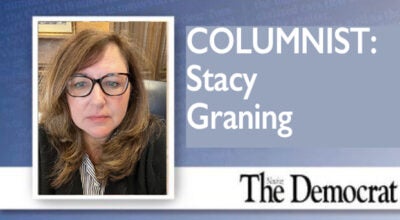Changes needed in local government, Part 2
Published 12:00 am Tuesday, January 30, 2018
Last time, we looked at the fact that we pay our part-time Aldermen more than a person making the MIT living wage of $10.19 in a 2080 hour per year job. The gap is even worse for part-time county Supervisors who, at a salary of $44,700.00, earn the equivalent of a living wage for a family of three at the MIT living wage, $45,032.00. Each of us knows good and loyal residents of Natchez who work at wages below the MIT living wage, in food service, tourism, cashier, retail, landscaping, office clerical and other occupations. Let’s start by reducing the salaries of aldermen to something more in line with part-time wages.
Low full-time wages are a bar to independent living. They force communal living. They result in poor diet and health, stress, depression, push some to criminal endeavors to supplement inadequate income, and reckless social behavior. Low wages further depress the local housing market. Yet, none of this appears to be on the radar of any of our local elected officials, city or county, based on observation and performance. The recent failure of the county to even have a plan in place to open the storm shelter to keep residents from dying of hypothermia comes to mind. It illustrates just how little real work or real effort is made by our elected public officials to address critical issues for our community. They enjoy the gravy train and photo ops. They enjoy doing as little as possible between checks. The bar is too low and must be raised.
Our elected officials do, however, manage to hire and keep employees connected to their individual political needs. This clearly undermined the YMCA management issue in favor of cronyism. So, let’s take a quick look at public staffing levels in the city, compared to elsewhere, and later, the county.
Wikipedia says our city population is 15,100. Several informed citizens assure me that we are really in the 10,500 to 13,000 range. I will use as comparators other MS cities that fall in the 10,000 to 18,600 population range. We peaked just short of 26,000 in 1970. These figures come from the Stennis Institute reports. See, http://www.sig.msstate.edu/. Because all cities do not report to the Stennis Institute at MSU each biennial cycle, the numbers below are the latest 2017, 2015 or 2013 survey numbers found.
In 2013, Mississippi municipalities employed an average of 68 full-time and 17 part-time employees, or 68/17. In 2015, the general average was 70 and 18, or 70/18. The 2017 report does not contain a summary. City population figures follow the city name, followed by number of full/part-time employees.
Our list of comparators includes Brookhaven (12,560) 140/2; Canton (13,189) 137/5; Clarksdale (17,962) 132/5; Cleveland (12,334)122/3; Corinth (14,573) 172/13; D’Iberville (11,828) 134/6; Gautier (18,572) 118/13; Greenwood (16,087) 240/18; Indianola (10,608) 103/21; Laurel (18,500) 263/36; McComb (13,000)192/2; Moss Point (13,726) 154/5; Ocean Springs (15,500) 181/30; Petal (10,815) 100/25; and, West Point (11,221)100/15. These 15 cities have an average population of 14,031. They average 153 full-time employees. They average 13 part-time employees.
Against this, Stennis reports a 2017 Natchez population of 15,792, with 210 full-time and 34 part-time employees. Bottom Line: we have around 50 to 70 more full and part-time city employees than we should have for a city of this size. What is your alderman doing about this?
Natchez city employment is way out of line with reality. It has not reduced in proportion to population decline since 1970. The same is obviously true of Greenwood, which had a population of near 23,000 in 1970, and has fallen to 16,000, but has, like Natchez, not reduced its bloated public payroll.
This top heavy city employment in Natchez needs to be fixed, now. The city continues to mindlessly operate as if we had 26,000 residents. We are quickly moving to less than half that number. We may already be there. Leadership here calls for aldermen making tough decisions and that plainly includes reduction of personnel and divesting city property to put it back on the tax rolls. If they do not want to do it, we should demand they resign.
The city does not have a manager. It is time to reduce the size of city government, divest city properties and cut loose non-profits to match our declining population, in particular, the burden on the ever-shrinking number of taxpayers. We clearly need to scrap the archaic code charter and so-called “weak mayor” form of government. We need a government with no mayor, or a commission form of local government that reduces elected officials from seven to three, with a professional manager. Please share the discussion.
Paul Benoist is a Natchez resident.





